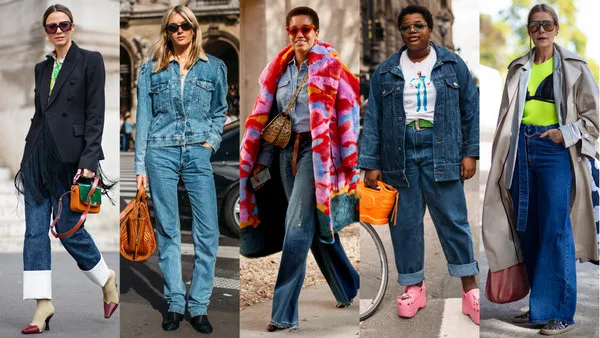Fashion is more than just clothing; it is a complex expression of culture, identity, and social trends. From the runways of Paris and Milan to street style in New York and Tokyo, fashion reflects both individual taste and collective movements. Understanding fashion involves exploring its history, sociocultural impact, economic influence, technological integration, and sustainability challenges.
Understanding Fashion as a Cultural Phenomenon
Fashion is deeply embedded in human culture and serves as a visual language that communicates social status, personality, and values. Anthropologists have long studied clothing and adornments as markers of identity, illustrating how trends often mirror political, economic, and societal shifts.
- Historical Significance: Fashion has evolved from functional attire to elaborate statements of wealth and class. In the 18th century, European aristocracy used extravagant fabrics and designs to signal power and influence.
- Cultural Identity: Traditional clothing in different regions communicates heritage and values. For example, Japanese kimonos or Indian saris hold symbolic meanings beyond aesthetics, reflecting ceremonies, regional identity, and familial status.
- Globalization of Trends: Modern fashion transcends borders, influenced by global connectivity. Social media platforms allow styles from Tokyo or Lagos to influence consumers in Los Angeles or London.
Key Fashion Movements and Their Impact
Fashion history is punctuated by movements that transformed industry standards, societal norms, and personal expression. Recognizing these movements allows us to appreciate the dynamic nature of style.
The Rise of Haute Couture
Haute couture represents fashion at its most refined and exclusive. Originating in Paris during the 19th century, haute couture focuses on bespoke, handcrafted garments that reflect innovation and artistry. Its influence extends beyond the elite, inspiring ready-to-wear collections and streetwear adaptations.
Streetwear and Urban Fashion
Streetwear has shifted fashion from elite spaces to accessible, everyday culture. Rooted in skate, hip-hop, and sports culture, streetwear brands have become global phenomena. This movement highlights the intersection of music, art, and fashion, demonstrating how subcultures can drive mainstream trends.
Sustainable and Ethical Fashion
The modern fashion industry faces scrutiny for environmental impact. Sustainable fashion prioritizes eco-friendly materials, ethical labor practices, and circular economy principles. Consumers increasingly demand transparency, leading brands to innovate with recycled fabrics, vegan leather, and slow-fashion approaches.
Technological Integration in Fashion
Technology is reshaping how fashion is designed, produced, and consumed. From virtual fittings to AI-driven trend analysis, innovation is redefining the consumer experience.
- 3D Printing: Designers now experiment with intricate designs previously impossible by traditional methods, enabling customization and reducing waste.
- Artificial Intelligence: AI predicts emerging trends by analyzing consumer behavior and social media engagement, helping brands optimize inventory and marketing strategies.
- Virtual and Augmented Reality: AR apps allow users to virtually try on clothing, reducing return rates and enhancing online shopping experiences.
The Economic Significance of Fashion
Fashion is a major global industry, generating trillions in revenue annually. It drives employment, influences retail strategies, and stimulates related industries such as textiles, logistics, and marketing.
- Luxury Markets: Luxury fashion remains a symbol of aspiration, commanding high margins and influencing mainstream design.
- Fast Fashion: Fast fashion caters to consumer demand for affordable, trendy clothing. While economically impactful, it raises ethical and environmental concerns, necessitating balanced approaches.
- Fashion Weeks and Events: International fashion weeks in cities like Paris, Milan, and New York are not only cultural showcases but also significant economic drivers, impacting tourism, media coverage, and brand valuation.
Psychology of Fashion: How Clothing Shapes Identity
Clothing influences perception, behavior, and even mood. Psychologists study how individuals use fashion to assert identity, convey status, and communicate personality traits.
- Color Psychology: Colors affect emotional responses; for example, red can signal confidence, while blue conveys calm authority.
- Dress for Success: Workplace attire often affects performance and credibility, highlighting the intersection between psychology and professional presentation.
- Social Signaling: Fashion allows individuals to align with groups, subcultures, or trends, fostering a sense of belonging and self-expression.
Fashion and Media Influence
Media, particularly digital platforms, has transformed fashion consumption. Influencers, blogs, and social media channels shape public perception and trend adoption.
- Influencer Marketing: Social media personalities showcase products, creating aspirational value and accelerating trend cycles.
- Digital Storytelling: Brands use content marketing to craft narratives around their collections, emphasizing craftsmanship, sustainability, or lifestyle alignment.
- Consumer Empowerment: Platforms like Instagram and TikTok allow consumers to participate in trend creation, democratizing influence in the fashion industry.
Challenges Facing the Fashion Industry
Despite its vibrancy, fashion faces critical challenges that require innovative solutions.
- Environmental Impact: The textile industry is a significant contributor to pollution and resource consumption. Addressing sustainability through circular fashion models is imperative.
- Labor Practices: Ethical concerns over fair wages and working conditions persist, particularly in fast fashion supply chains.
- Counterfeit Goods: Intellectual property and authenticity remain concerns for brands and consumers alike, driving the need for verification technologies.
Future Trends in Fashion
The future of fashion will be defined by sustainability, technological integration, and inclusivity.
- Smart Textiles: Clothing with embedded technology, such as fitness trackers or climate-adaptive fabrics, will merge fashion and functionality.
- Inclusive Fashion: Brands are increasingly creating diverse sizing, gender-neutral clothing, and adaptive wear for differently-abled individuals.
- Localism and Craftsmanship: Consumers are showing renewed interest in artisanal and locally sourced products, emphasizing quality and ethical production.
Real-Life Impact of Fashion
Fashion is not merely aesthetic; it shapes societal attitudes, cultural exchange, and personal empowerment. From boosting confidence in professional settings to expressing cultural pride, clothing plays a tangible role in everyday life.
- Professionals often strategically dress to enhance credibility and presence.
- Social movements leverage fashion to communicate messages, as seen in activist t-shirts or symbolic colors.
- Fashion fosters creativity and innovation, influencing art, media, and design industries globally.
Frequently Asked Questions
1. How has technology changed fashion consumption?
Technology allows consumers to virtually try on clothing, track trends through AI analytics, and access global fashion markets instantly. This creates a more personalized and interactive shopping experience.
2. Why is sustainable fashion important?
Sustainable fashion reduces environmental impact, ensures ethical labor practices, and promotes resource efficiency, mitigating the negative consequences of fast-fashion production cycles.
3. How do fashion trends spread globally?
Trends spread through media, social platforms, celebrity endorsements, and fashion weeks, enabling cross-cultural influence and rapid adoption worldwide.
4. What role does fashion play in identity formation?
Clothing communicates personality, social alignment, and cultural affiliation, allowing individuals to express themselves visually and align with desired social groups.
5. Can fashion be both ethical and affordable?
While challenging, brands are increasingly creating affordable collections with ethical production, using sustainable materials and transparent supply chains to balance cost and responsibility.
6. How do fashion movements influence mainstream culture?
Movements like streetwear or sustainable fashion often start in subcultures and gradually influence broader consumer habits, media narratives, and retail offerings.
7. What is the future of wearable technology in fashion?
Wearable technology will integrate health monitoring, adaptive climate control, and interactive media features into clothing, making fashion both functional and expressive.
Fashion continues to evolve, blending art, technology, culture, and commerce. By understanding its historical roots, sociocultural impact, economic significance, and emerging trends, we gain insight into why fashion remains a powerful force in modern society, shaping identities, industries, and global culture.








